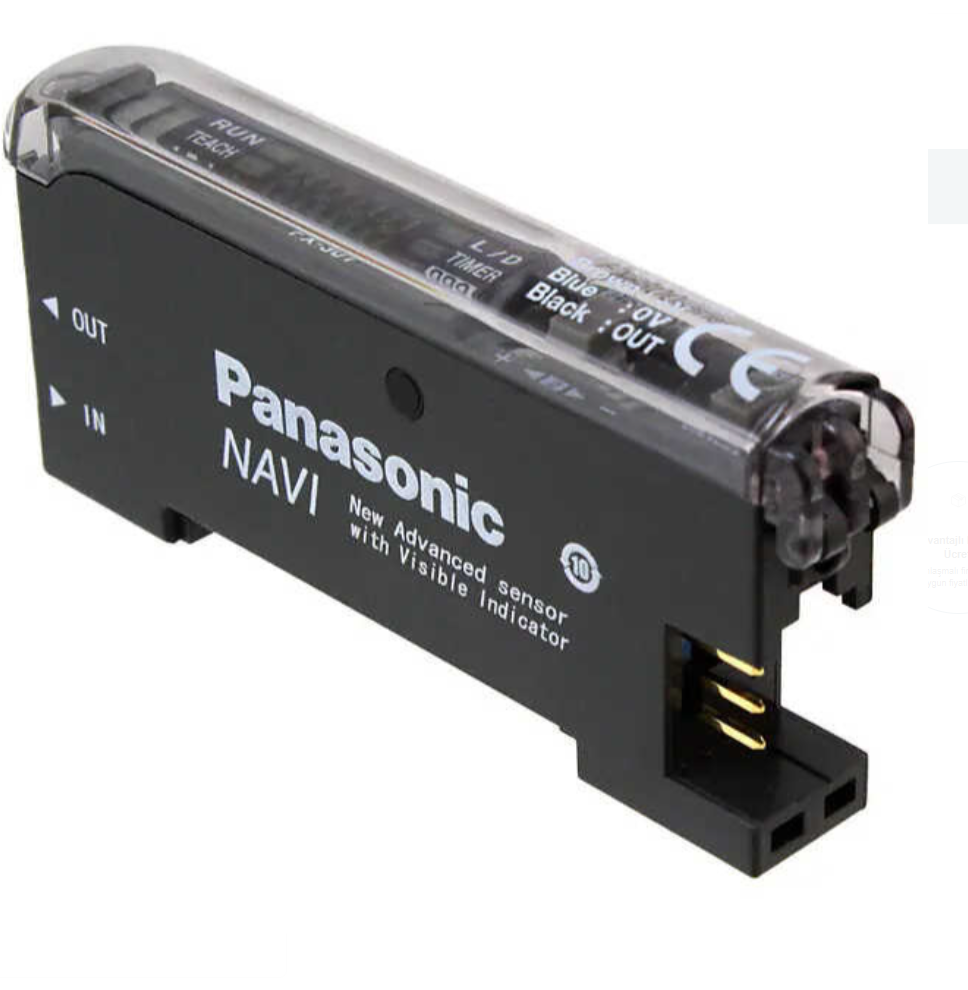Panasonic FX-411B Digital Fiber Sensor: Advanced Industrial Automation
The Panasonic FX-411B digital fiber sensor redefines excellence in industrial automation sensor applications, featuring a blue LED fiber sensor for high-precision fiber optic detection. With an NPN output sensor and a multi-turn potentiometer, this compact fiber amplifier excels in FX-411B semiconductor manufacturing and precision assembly sensor tasks. As a RoHS-compliant sensor with a dual digital display, it ensures reliable performance in high-tech environments. The four-level light emission and peak hold function enhance FX-411B quality control, making it ideal for indoor fiber optic sensor setups powered by a 12-24 VDC sensor.
Technical Specifications of Panasonic FX-411B Digital Fiber Sensor
Engineered for high-precision automation, the FX-411B offers robust specifications. The table below details its key features:
| Parameter | Specification |
|---|---|
| Sensor Type | Digital fiber optic, blue LED |
| Output | NPN open-collector transistor |
| Adjustment | Multi-turn potentiometer |
| Display | Dual 4-digit red/green LED |
| Light Emission | Four levels (light saturation prevention) |
| Power Supply | 12–24 VDC |
| Compliance Standards | RoHS (2011/65/EU, 2015/863/EU) |
Key Features and Industrial Applications
High-Precision Detection with Blue LED
The Panasonic FX-411B digital fiber sensor delivers high-precision fiber optic detection, making it perfect for Panasonic FX-411B digital fiber sensors semiconductor manufacturing tasks such as wafer alignment or component inspection. Its peak hold function ensures accurate FX-411B quality control in precision assembly sensor applications, providing consistent results in high-tech production environments.
Advanced Adjustability and Monitoring
The multi-turn potentiometer enables precise sensitivity adjustments, while the dual digital display with 4-digit red/green LEDs provides clear, real-time feedback for efficient operation. The four-level light emission, designed with light saturation prevention, ensures reliable detection in indoor fiber optic sensor setups, enhancing performance in compact fiber amplifier installations.
Robust Design for High-Tech Automation
The FX-411B’s NPN output sensor and 12-24 VDC sensor power supply ensure compatibility with standard automation systems. As a RoHS-compliant sensor, it meets stringent environmental standards. The FX-411B datasheet and FX-411B setup guide, provided by Panasonic, offer comprehensive instructions for optimizing performance in precision assembly sensor and semiconductor manufacturing applications.
Installation and Maintenance
The compact fiber amplifier design, paired with the CN-73 hook-up cable, simplifies the FX-411B’s installation in industrial automation sensor systems. The multi-turn potentiometer facilitates precise on-site adjustments for high-precision fiber optic detection. Routine cleaning of the fiber head maintains optimal performance, while the durable construction reduces maintenance needs, ensuring long-term reliability in FX-411B quality control tasks.
Safety and Compliance
As a RoHS-compliant sensor, the FX-411B adheres to environmental standards (2011/65/EU, 2015/863/EU), reflecting Panasonic’s commitment to sustainability. Its light saturation prevention feature ensures safe and accurate detection in indoor fiber optic sensor applications. The dual digital display enhances operational efficiency in multi-sensor configurations.
Why Choose the Panasonic FX-411B Digital Fiber Sensor?
The Panasonic FX-411B digital fiber sensor is a premier digital fiber sensor for industrial automation. Its blue LED fiber sensor, NPN output sensor, and multi-turn potentiometer make it ideal for FX-411B semiconductor manufacturing and precision assembly sensor tasks. The compact fiber amplifier, high-precision fiber optic capabilities, and dual digital display deliver exceptional performance in FX-411B quality control. Review the FX-411B datasheet for detailed specifications and elevate your automation processes with this reliable, high-performance sensor.
Visit our blog about The Importance of Sensors in Industry 4.0.
Seamless Integration in Smart Manufacturing
The Panasonic FX-411B digital fiber sensor integrates effortlessly with modern automation systems, making it an essential component in smart manufacturing environments. Its compact fiber amplifier and advanced detection capabilities allow precise monitoring of miniature components, ensuring accurate alignment and assembly in semiconductor and electronic production lines. The FX-411B’s ability to deliver stable detection even under fluctuating lighting conditions highlights its reliability in high-speed, high-precision operations.
Engineers benefit from the sensor’s user-friendly configuration, as the multi-turn potentiometer and dual LED display simplify setup and calibration. This efficiency translates directly to shorter downtime, reduced errors, and smoother workflow in automated systems. Whether applied in robotics, packaging, or optical inspection processes, the FX-411B offers unmatched consistency and precision.
Optimized Performance for Next-Generation Automation
Equipped with energy-efficient blue LED technology, the FX-411B reduces power consumption while maintaining excellent signal stability. This not only supports sustainability goals but also extends the sensor’s operational life. Its RoHS compliance ensures environmental safety, making it an ideal choice for industries aiming to meet global production and ecological standards.
The Panasonic FX-411B digital fiber sensor represents the fusion of accuracy, durability, and intelligent design. Its adaptability across various automation applications ensures continuous improvement in manufacturing efficiency, reinforcing its status as a cornerstone technology for advanced industrial automation.

